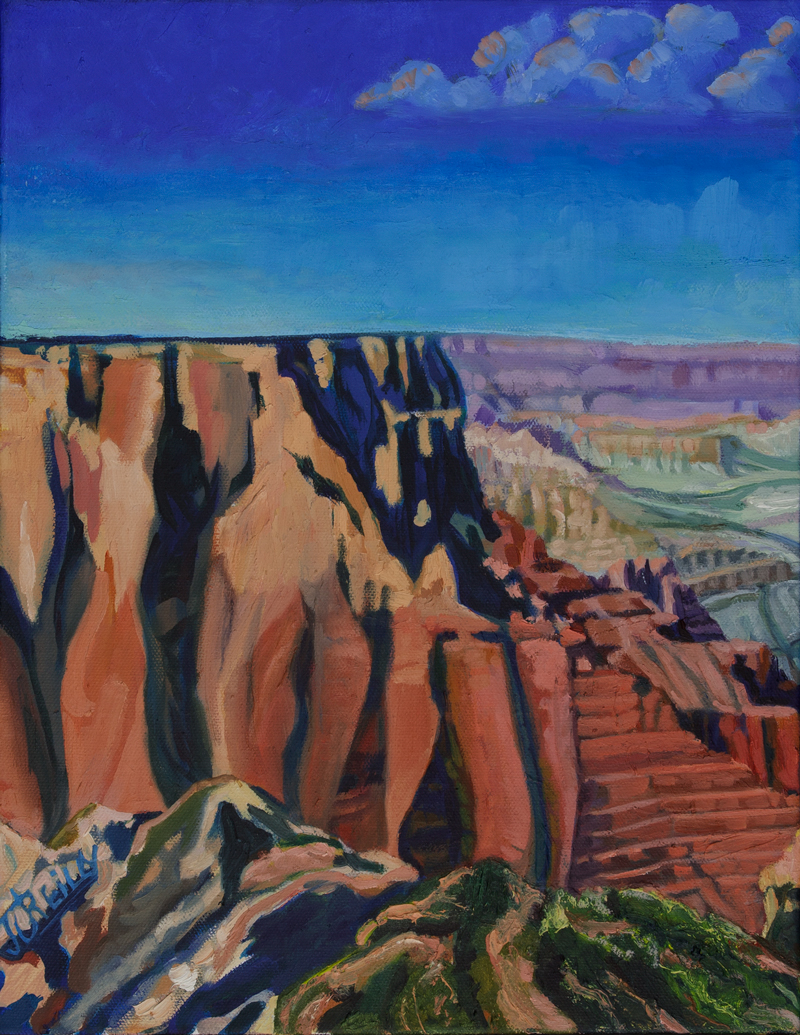Is Oil Or Acrylic Paint Better For Fine Art?

26 September 2024
Which is better, oil or acrylic?
Trick question. Answer: they're equal, but they do different things.
For many years and reasons, I've used either acrylic or gouache paint.
This last spring I jumped back into painting with oil, but with a new (for me) approach. I ran across a social media post about painting with oil on top of acrylic. What?! This may not be news to you, but it was a big idea to me. I was in a burn to try it out, so I invested in a few good oil colors and headed to the studio.
Wow. My world exploded.
In the first brushstrokes, I had the speedy power of acrylic for collage and texture combined with the luminosity of oil.
There's stuff you can do with acrylic that you can't duplicate in oil - or at least not without extended drying time. Rapid drying time was the original force behind the development of acrylic paints, and it's still a huge factor.
There are also things happen with oil paint that will never happen with acrylic.
Lustre and luminosity
Oil paints are alive. Acrylic paints are not. The difference is the medium in which the pigments are suspended, and in the way each paint dries.
Acrylic medium will eventually dry to a static state. Once fully cured, its molecules don't change and they don't move around.
Oil paint never reaches a static state. It's molecules will always move around and shift - sort of like amber, or glass. The oils' molecules refract as well as reflect light, so the light is always in motion.
The biggest difference for me is the way the paint handles. I'm re-discovering the incredible luminosity, subtlety and blending qualities of oil paint. It doesn't dry instantly so there are limitless possibilities in the ways the paint can be worked.
Speed and Flexibility
Acrylic beats oil many times over to the finish line with ease of use (and cleanup). It's speedy drying time and bond strength means you can layer different texture. You can pour and drip and glue things. You can add substances for complex texture. You can sculpt with it, glaze with it and paint in limitless layers.
Best of Both Worlds
What's been the most exciting is gaining the benefits of both paints in the same painting. True, it's a one-way street: you can start with acrylic, then layer over that with oil, but you can't go back. Acrylic will not adhere over an oil-based surface.
I began the painting above, "Canyon Skies", in acrylic. I wanted fast coverage to lay out my idea and build the composition. But I wanted the oils for the top layers and subtle rich surfaces. I'm happy with how it worked out, and now I'm eager for more paint adventures. I have lots of questions to ask of the paint.
Stay tuned, and I'll report in now and then about how it's going. For the moment, I'm off to the studio.
Thanks for stopping by!
Julia
If you'd like to stay informed about workshops, sales and shows, and behind-the-scenes about the life of an artist, add yourself to my art newsletter.